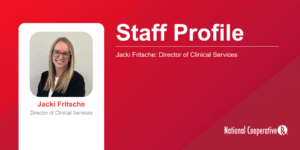- 0.5x
- 0.8x
- 1x
- 1.2x
- 1.5x
- 2x
The popularity of alternative funding and sourcing vendors has grown as employers look for ways to reduce costs. To maintain viability, many vendors have recently adopted international sourcing strategies in response to drug makers’ heightened scrutiny and stricter program eligibility. While the appeal to plan sponsors of promised savings is understandable, we continue to see recurring issues in the proposals these vendors provide. Plan sponsors with sound plan design and strong PBM contract terms will be hard pressed to find savings from alternative funding vendors.
1. Rebate Omissions or Underestimations
Many proposals fail to account for the loss of manufacturer rebates when prescription drugs are sourced outside of rebate arrangements. “Savings” comparisons often omit the rebates provided by pharmacy benefit plans or underestimate their current or future value. Guarantees are one thing. Actual rebate invoicing opportunity is another. Not accounting for the actual rebate invoicing opportunity loss can make the alternative funding vendor’s savings appear larger than they are and result in an inaccurate comparison of net costs. In addition, some proposals calculate fees as a percentage of claimed savings, so overstated savings can lead to higher fees. Once fees, lost member cost-share, and reduced rebate opportunities are factored in, the proposed savings may be minimal or break-even at best.
2. Faulty Assumptions
Participation Rates: It is unrealistic to assume all, or most, eligible patients will participate in the program, especially if it is not mandatory. Patients may be reluctant due to the time-consuming, cumbersome and/or confusing process. In addition, some prescription drugs may not be eligible for alternative sourcing. If savings proposals assume 100% adoption but actual participation is far less, the program’s overall effectiveness and projected savings will be notably reduced.
Outdated and/or Trended Data: Proposals do not factor in future changes. These may include formulary changes, generic or biosimilar availability, list price changes, and/or rebate and discount changes. Not accounting for these overestimates savings. Some may also build in trend assumptions and leave out upcoming generic switches that the plan will benefit from, making the savings appear higher than they are.
3. Cherry-picking
Who doesn’t love a good cherry? But watch out for the pit! Savings are often limited to select brand medications rather than all medications. These brands are typically among the most highly rebated products. A rebate guarantee typically does NOT equal the invoice rebate opportunity. Some individual situations may provide savings, while others may cost more than the current PBM arrangement. Failing to consider the costs of all medications can give employers a skewed view of the program’s overall potential. Selective approaches can also confuse patients, leaving them uncertain about which channel or pathway to use for each medication. This uncertainty may lower participation.
4. Risks and Liabilities
Alternative funding vendors may source drugs internationally. The FDA does NOT ensure the safety or efficacy of products obtained outside of the USA. While sourcing elsewhere may reduce costs, it also introduces potential risks. These include differing manufacturing standards, inconsistent labeling, therapy delays, limited medical supervision, shipping or handling issues, and concerns about counterfeit or adulterated products. Should issues arise, alternative funding vendors are unwilling to indemnify plans or patients. Should an adverse health issue arise, the plan sponsor is at risk of higher medical spend and/or a potential lawsuit.
To fulfill fiduciary duty obligations, employers should carefully analyze these factors before implementing alternative funding programs. Beyond potentially overstated savings, limited patient adoption, and legal risks, such arrangements can undermine existing pharmacy benefit contracts, complicate plan management, and create unforeseen financial or operational challenges.
National CooperativeRx is available to help employers evaluate the full picture of proposals from alternative funding vendors and can provide a comparable analysis using actual rebate returns on medications. In our experience, no alternative funding arrangement has exceeded the value, terms, and protections included in pharmacy benefit plans with the Cooperative. If you would like us to assess proposals, please contact your National CooperativeRx Account Representative.




